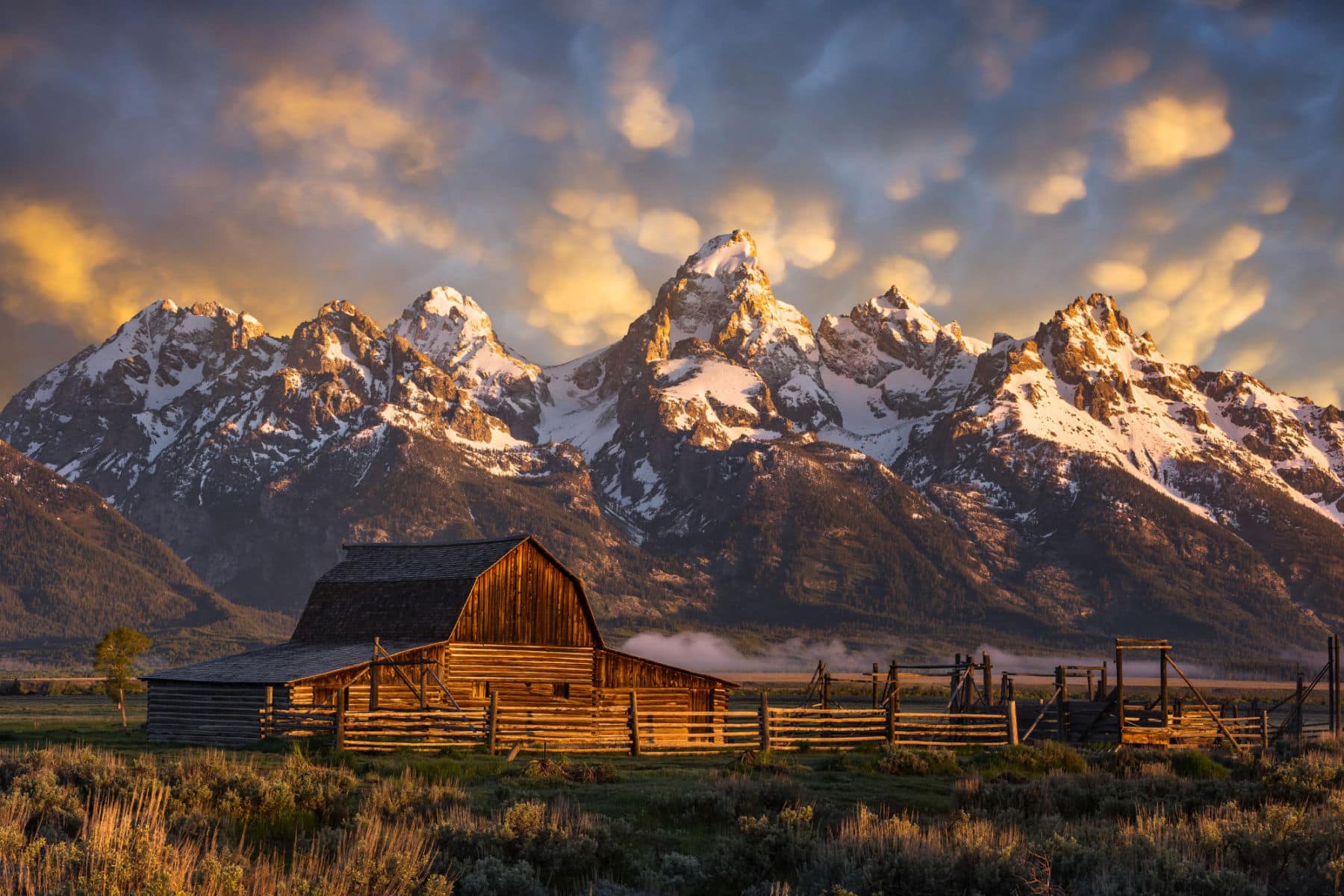
Article Summary: Grand Teton National Park Facts
Grand Teton National Park Facts! In this article, More Than Just Parks provides you with 15 amazing facts about one of America’s most magnificent national parks.
More Than Just Parks is your one-stop-shop when it comes to learning everything you’ll need to know about America’s national parks. We’ve got expert guides, beautiful photos, helpful tips, breathtaking films and so much more.
I’ve been to so many of these amazing places since retiring from teaching in 2018. Did I mention that I taught history? I spent a lifetime teaching about the history behind some of these natural wonders. Then I got to see them firsthand. And now I’m sharing some of the incredible stories about these beautiful places with you. It doesn’t get any better than that!
More Than Just Parks takes a deeper dive with its national park facts. We’ve done our homework so that you’ll get more than you bargained for.
Without further ado, let’s dive in.
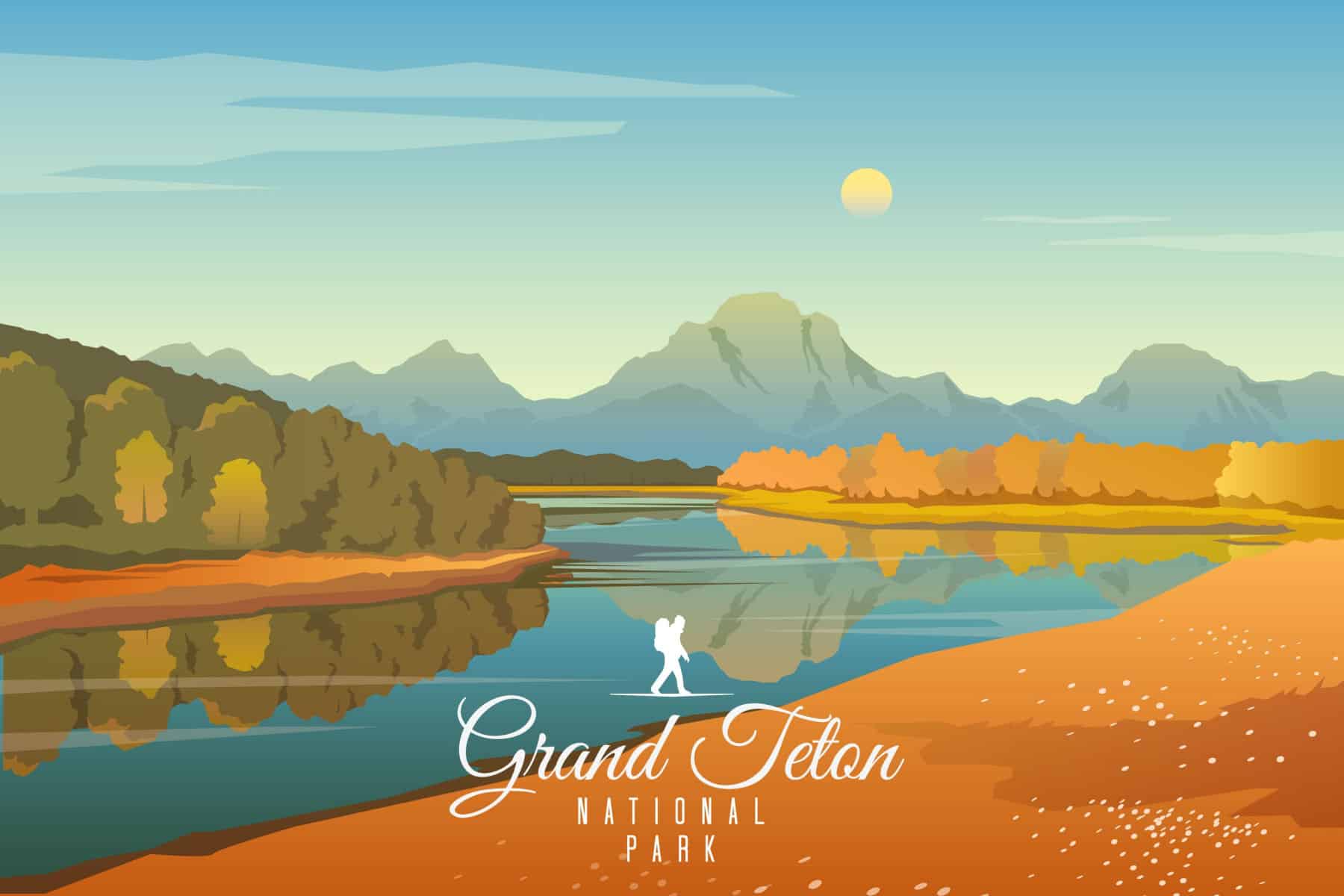
Table Of Contents: Grant Teton National Park Facts
Grand Teton National Park Facts
- Facts About Grand Teton National Park
- Top 5 Grand Teton Facts
- Top 10 Grand Teton National Park Facts
- 6. Chester Arthur Was The First President To Visit The Grand Tetons
- 7. Grand Teton National Park’s Creation Was Due, In Part, To The Efforts Of A Wealthy Philanthropist
- 8. Jackson Hole Has Been Featured In Films
- 9. Grand Teton National Park Has Its Own Airport
- 10. Grand Teton Features Some Amazing Wildlife Including The Fastest Land Mammal
- Top 15 Grand Teton National Park Facts
- 11. The Park Also Features The Smallest Bird Found In North America
- 12. The Grand Teton Mountain Range Is The Youngest Range In The Rocky Mountains
- 13. A 2.7 Billion-Year Old Metamorphic Rock Called Gneiss Makes Up Much Of The Teton Range
- 14. Grand Teton Participates In An Elk Reduction Program
- 15. Grand Teton Was A Family Affair
- Why Trust Us About Grand Teton National Park?
- Meet The Parks Brothers
- Map Of Grand Teton National Park
- We Hope You’ll Follow Our Journey
Facts About Grand Teton National Park
Some Basic Facts About Grand Teton National Park
Grand Teton National Park is a beautiful and rugged park located in Wyoming, in the United States. It covers over 310,000 acres of land and is home to the Teton Range, a group of towering, jagged peaks that rise dramatically from the surrounding plains.
The park is located in the Rocky Mountains and features a diverse landscape, including forests of pine and spruce trees, alpine meadows, and crystal clear streams and lakes. The park is also home to a wide variety of plant and animal life, including grizzly bears, wolves, elk, bighorn sheep, and moose.
There are many ways to explore and enjoy Grand Teton National Park. Visitors can take a scenic drive along the park’s roads, go hiking or biking on the park’s trails, take a boat tour on one of the park’s lakes, or even go horseback riding. There are also several historic lodges and chalets located within the park, providing comfortable accommodations for visitors.
Grand Teton National Park is a beautiful and wild place, offering visitors the opportunity to experience the beauty and majesty of the natural world. It is a great destination for outdoor enthusiasts, with plenty of opportunities for hiking, camping, and other outdoor activities.
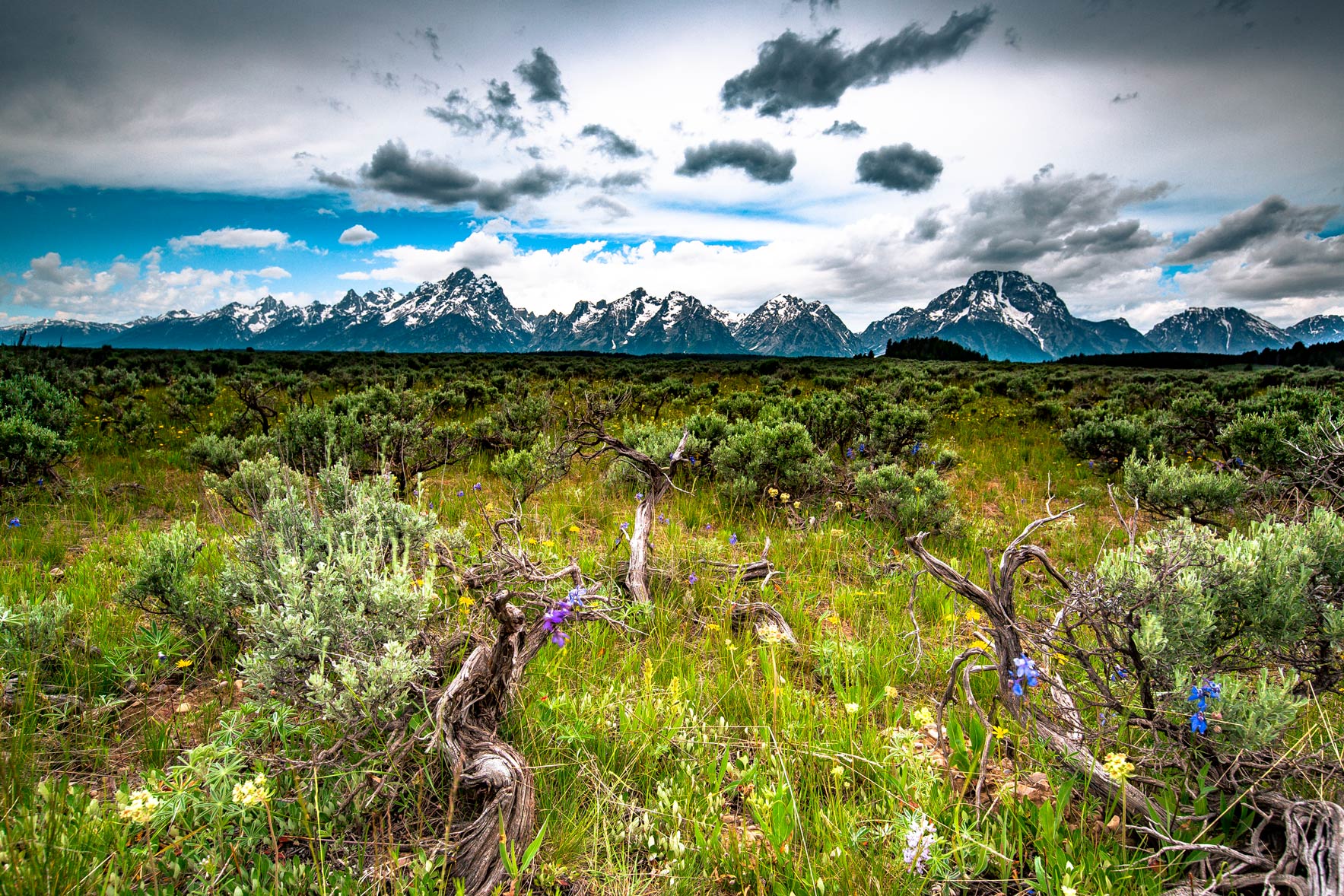
Here Are Some Basic Facts About Grand Teton
- Location: Wyoming
- Acreage: Park boundaries include approximately 310,000 acres, 485 square miles.
- Visitation: Grand Teton National Park hosted 3,885,230 recreation visits in 2021, the highest number of recreation visits for one year in the park’s history.
- Highest Elevation: Grand Teton, located at 13,775 feet is the highest point of the Teton Range and the second highest peak in the U.S. state of Wyoming after Gannett Peak. The peak extends from southern Alaska to northern New Mexico.
- Lowest Elevation: Fish Creek at south boundary, 6,320 feet.
- Average annual precipitation: On average, Jackson Hole receives just over 21 inches of precipitation each year, with roughly half of that falling as snow during the winter months. During the summer months daytime temperatures can reach into the 80s; however, overnight lows throughout the park can drop down into the 30s, and snow can fall anytime.
- When Did It Become A National Park? Grand Teton National Park was established in 1929; Jackson Hole National Monument was created in 1943. The two units were combined to become the present Grand Teton National Park in 1950.
CHECK OUT: 10 EPIC Wyoming National Parks Worth Visiting
Top 5 Grand Teton Facts
1. The Grand Tetons Were Created By A Seismic Disaster
As someone who spent a good portion of his life teaching history, I sometimes have to remind myself that “geologic time” predates the history with which I am more familiar by quite a wide margin.
If you’re interested in origin stories then one of the most fascinating Grand Teton National Parks Facts is this:
The iconic topography which makes the park so appealing to so many was created by a seismic disaster or rather a series of seismic disasters.
During each major quake, Jackson Hole dropped downward and the Teton Range rose upward.
What this did was to increase the vertical distance between the valley and the mountains which was responsible for the stunning topography as, after 13 millions years of earthquakes, the tallest peaks tower almost 7,000 feet above the valley floor. Talk about your shake, rattle and roll!
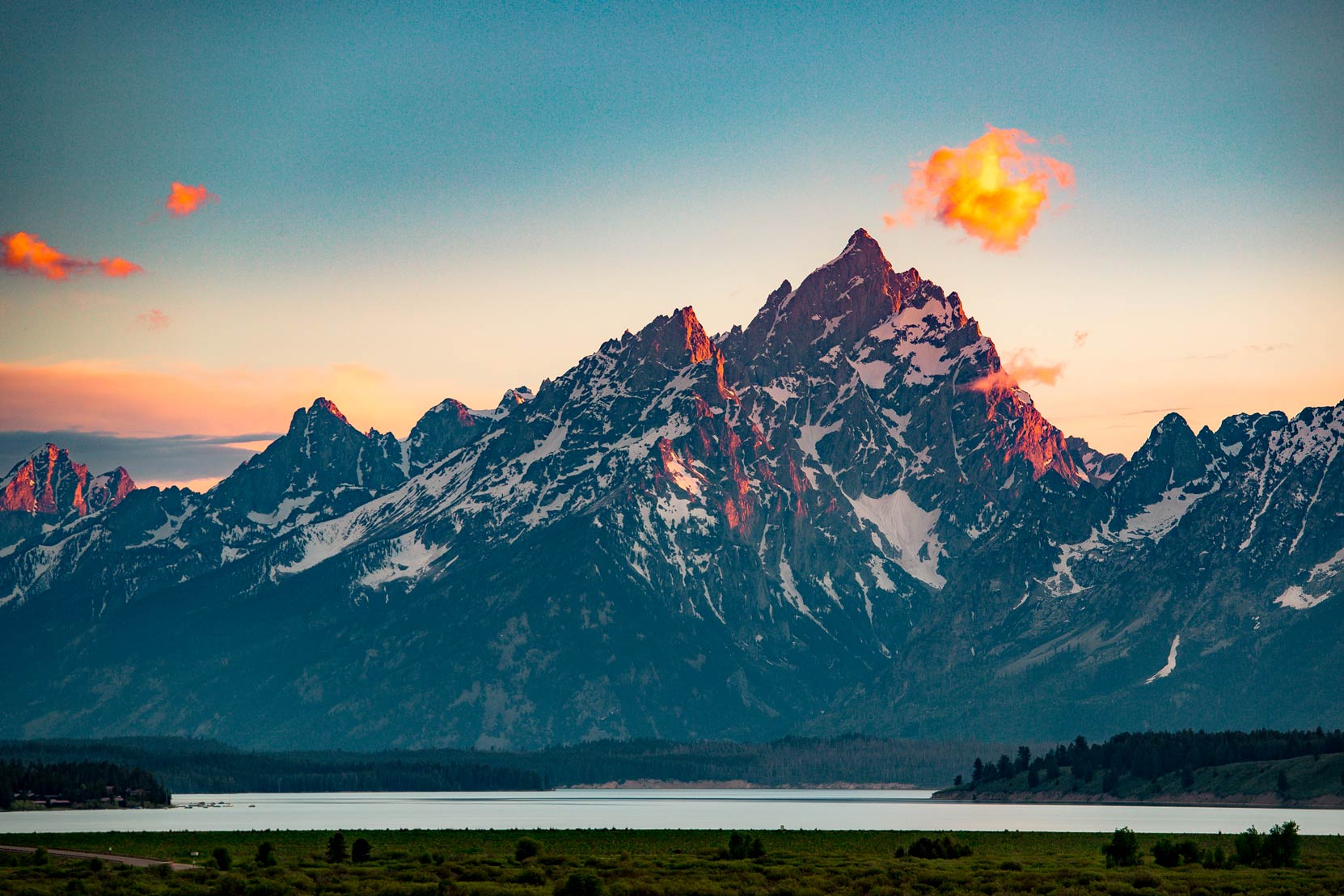
CHECK OUT: 11 AMAZING Facts About Acadia National Park
2. The Earliest Peoples Suddenly Vanished Leaving No Trace Of Their Presence
One of my favorite Grand Teton National Park Facts involves a mystery. Archaeologists know that the earliest peoples to inhabit what is today Grand Teton National Park lived and roamed in small family units in the area. The question, however, is what happened to them?
We know that these people used tools and fire. They were speakers of the Athabaskan language. They knew how to adapt to the local geography. While these earliest inhabitants left behind no written records there were clues as to their existence nonetheless.
So who were they? They were a large group of Native American tribes who spoke similar languages. This group of Native Americans traditionally lived in northwestern North America.
While there, they fished for trout in the streams and hunted for animals in the higher elevations. For them, the land provided a bountiful harvest.
What’s amazing is that the earliest evidence of these humans operating in this area dates back at least 11,000 years.
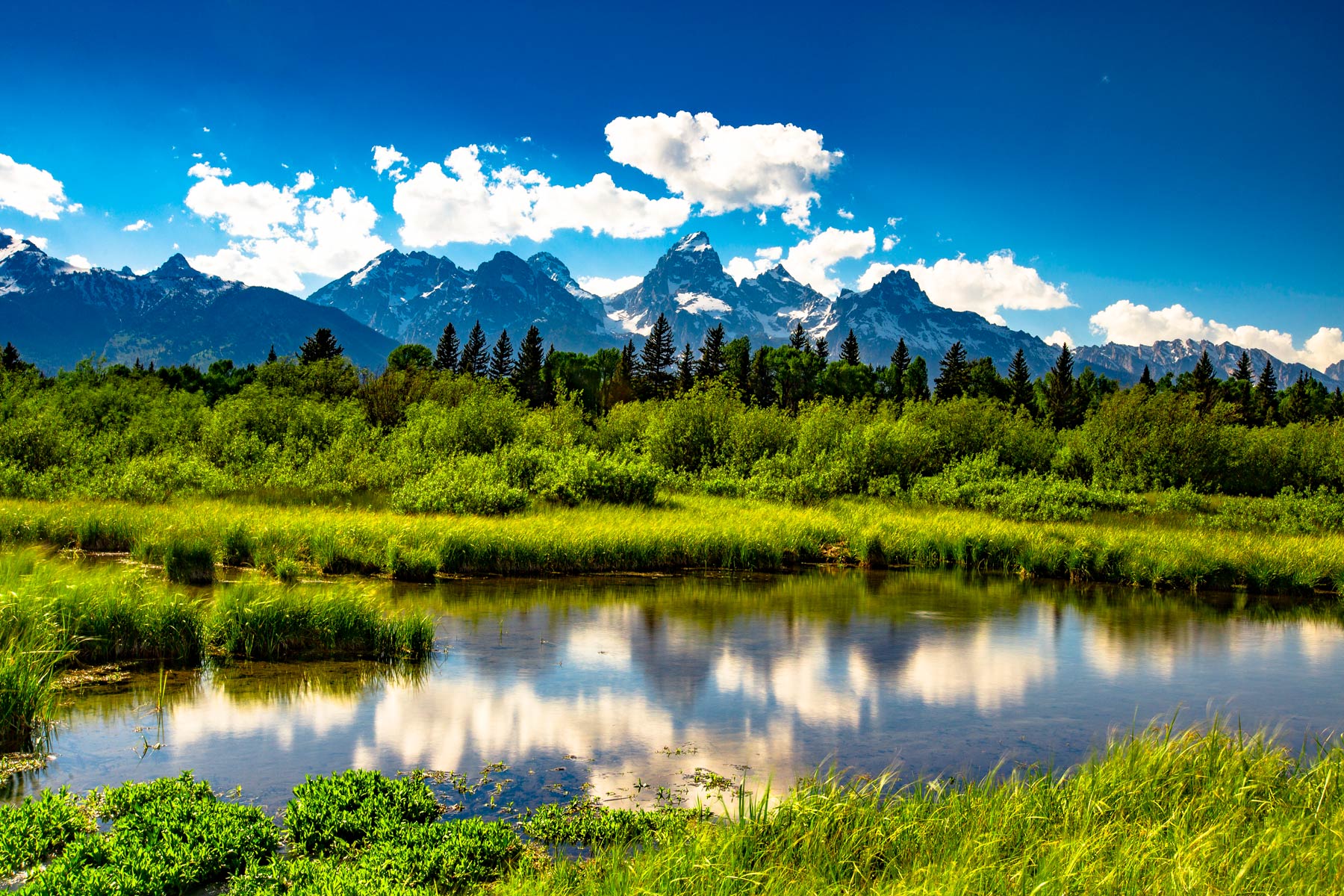
Then They Suddenly Vanished
And now here’s the mystery: These peoples, for a reason unknown to us today, suddenly vanished leaving behind no trace of their ever having been there.
While certain geologic events (e.g., earthquakes, fires floods) can cause the sudden disappearance of a people, it’s believed that the Athapaskan were forced out of the area by a newer and stronger group.
Survival of the fittest perhaps? And they were no longer the fittest.
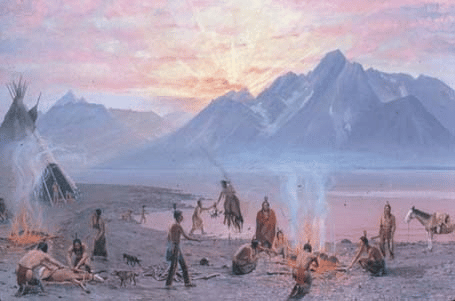
Enter The Shoshonean-Speaking Peoples
Scientists hypothesize that, in the 16th and 17th centuries, the Shoshonean-speaking peoples, who were attracted by superior hunting grounds, essentially evicted these earlier tenants.
According to the National Park Service, by the time Europeans arrived, tribes such as the Shoshone, Bannock, Blackfoot, Crow, Flathead, Gros Ventre, Nez Perce and others were harvesting the valley’s seasonal riches.
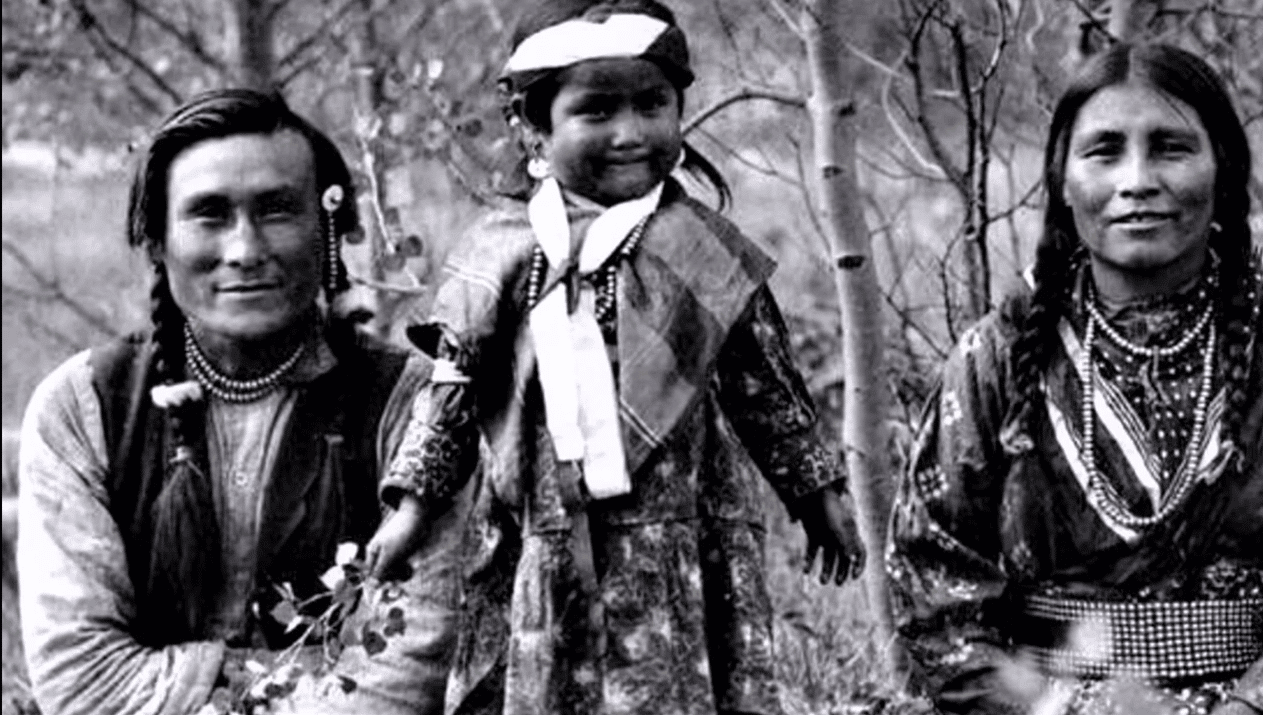
Pitting their meager skills of survival against both the animals and elements of what was then truly the New World, the Early Hunters, as they are called, made their way into the region surrounding Jackson Hole by an early date.
-Robret B. Betts, Along the ramparts of the tetons: the saga of jackson hole, wyoming
Across the Tetons, near American Falls in Idaho, bones of a bison belonging to a long-extinct species have been discovered under conditions suggesting that it may have been hunted down by men as far back as 30,000 years ago.
CHECK OUT: 11 AMAZING Facts About Arches National Park
3. French-Canadian Trappers Named The Tetons
One of the more interesting of the Grand Teton National Park Facts has to do with how the “Tetons” got their name.
The naming of the Teton mountain range, also known as the Tetons, is not related to any sexual connotations.
The name “Teton” is derived from the French word “tétons” which means “breasts” in English, but it was named by French trappers and explorers who were mapping the area in the late 1700s, who were inspired by the shape of the mountains and a vivid imagination.
The naming of geographical places is often done by the first explorers, mapmakers, settlers and it can be influenced by many factors such as shape, location, natural features and sometimes their memories or imagination.
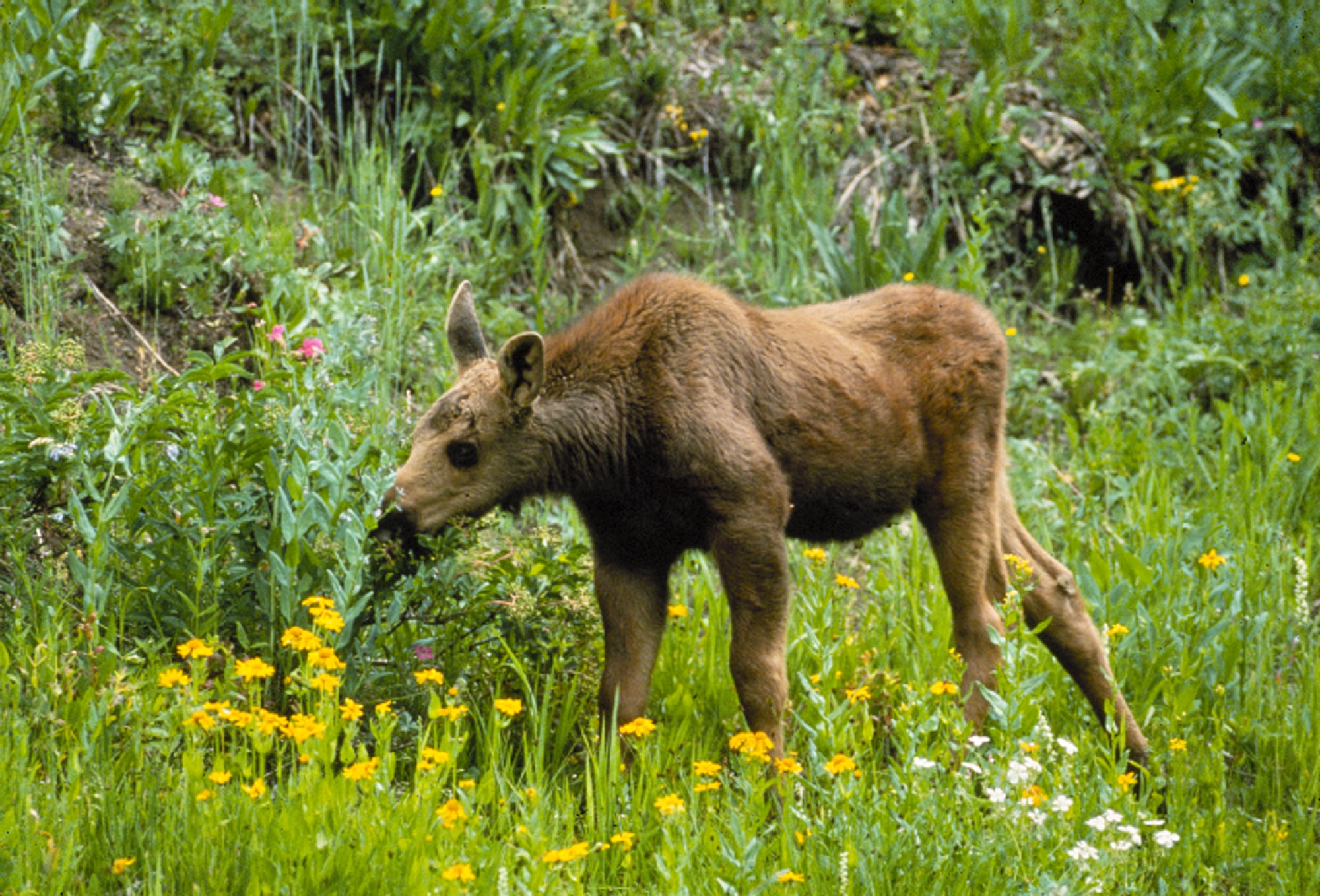
CHECK OUT: 10 AMAZING Facts About Badlands National Park
4. The First American To Pass Through The Region Has A Stone Named After Him
One of the lesser known explorers who comes down to us through the pages of history is a man by the name of John Colter.
Colter was a member of the Lewis & Clark Expedition. You might not know is name, but that fact alone is enough to ensure his place in history.
Now here’s an interesting fact. Colter’s Route was included in a version of William Clark’s map, titled “A Map of Lewis and Clark’s Track Across the Western Portion of North America from the Mississippi to the Pacific Ocean,” which was published in 1814.
Clark’s original field sketches, drawn on numerous separate sheets that traced the flows of principal rivers as opposed to traditional rectangular or square maps, were shown to President Jefferson in 1807 and did not include Colter’s Route, as he was still traveling at the time.

He Was Just Getting Started
But in John Colter’s case, he was just getting started.
Colter is best remembered for the explorations he made during the winter of 1807–1808, when he became the first known person of European descent to enter the region which later became Yellowstone National Park and to see the Teton Mountain Range.
Colter spent months alone in the wilderness. He is widely considered to be the first known mountain man.

The Colter Stone
This is where Colter’s story gets even more interesting. John Colter disappeared from his settlement and his body was never found.
The Colter Stone is a piece of rhyolite that was discovered near Tetonia, Idaho in 1933.
The location of the stone’s discovery, on the west side of the Teton Range, would suggest that Colter traveled through the Teton Pass, but the authenticity of the stone has not been fully established.
The stone is currently displayed in one of the park’s museums and is considered a fascinating piece of the puzzle in understanding John Colter’s pioneering journey through the region.
Now if you’re interested in learning more then I recommend: The Mystery of John Colter: The Man Who Discovered Yellowstone by Ronald M. Anglin & Larry E. Morris.
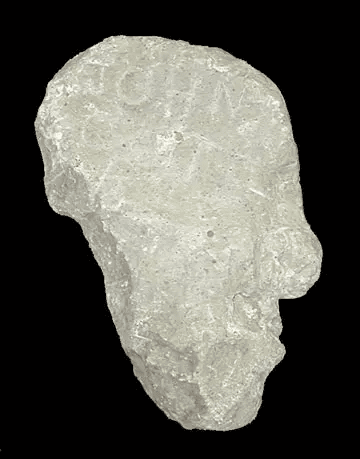
CHECK OUT: 12 AMAZING Facts About Big Bend National Park
Other Mountain Men Came Too
According to the National Park Service, there were other Mountain Men who came too. Fur trappers, also known as “mountain men,” trekked west in search of beaver fur for top hats that were fashionable in the early 1800s.
Many trappers, including David Edward (Davey) Jackson, based their operations in this area. The valley we know today as Jackson Hole was dubbed “Davey Jackson’s Hole” in 1829 by William Sublette, Jackson’s trapping partner.
The beaver population declined rapidly with over-trapping, and when fashions turned from fur to silk hats, the era of the mountain men faded away by the 1840s.
5. The Spalding Party Ascended The Tetons In 1898
Another fascinating Grand Teton National Park Fact involves one of the earliest (perhaps the earliest) ascent of the Grand Tetons in 1898. It was an outstanding event in American mountaineering, regardless of whether or not it is considered to be the first ascent.
It is certainly the first definitely authenticated ascent and it provided a sound route to the summit which has been followed by a large proportion of succeeding climbers.
Some people claim that Nathaniel P. Langford and James Stevenson reached the summit in 1872 though this has been disputed.
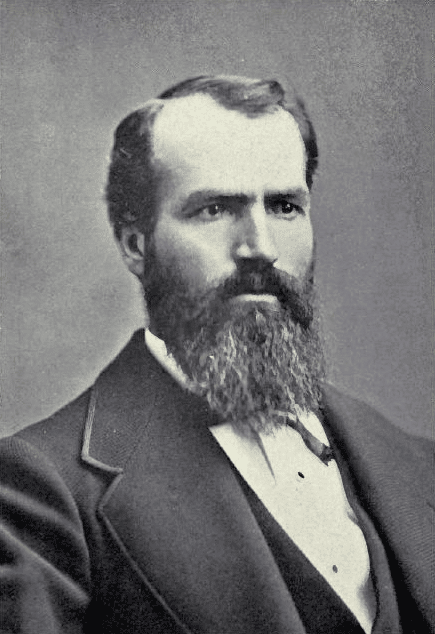
Franklin Spencer Spalding
What is known is that Franklin Spencer Spalding added his name to the history of the Grand Teton when he and his party made their historic ascent. As Spalding wrote:
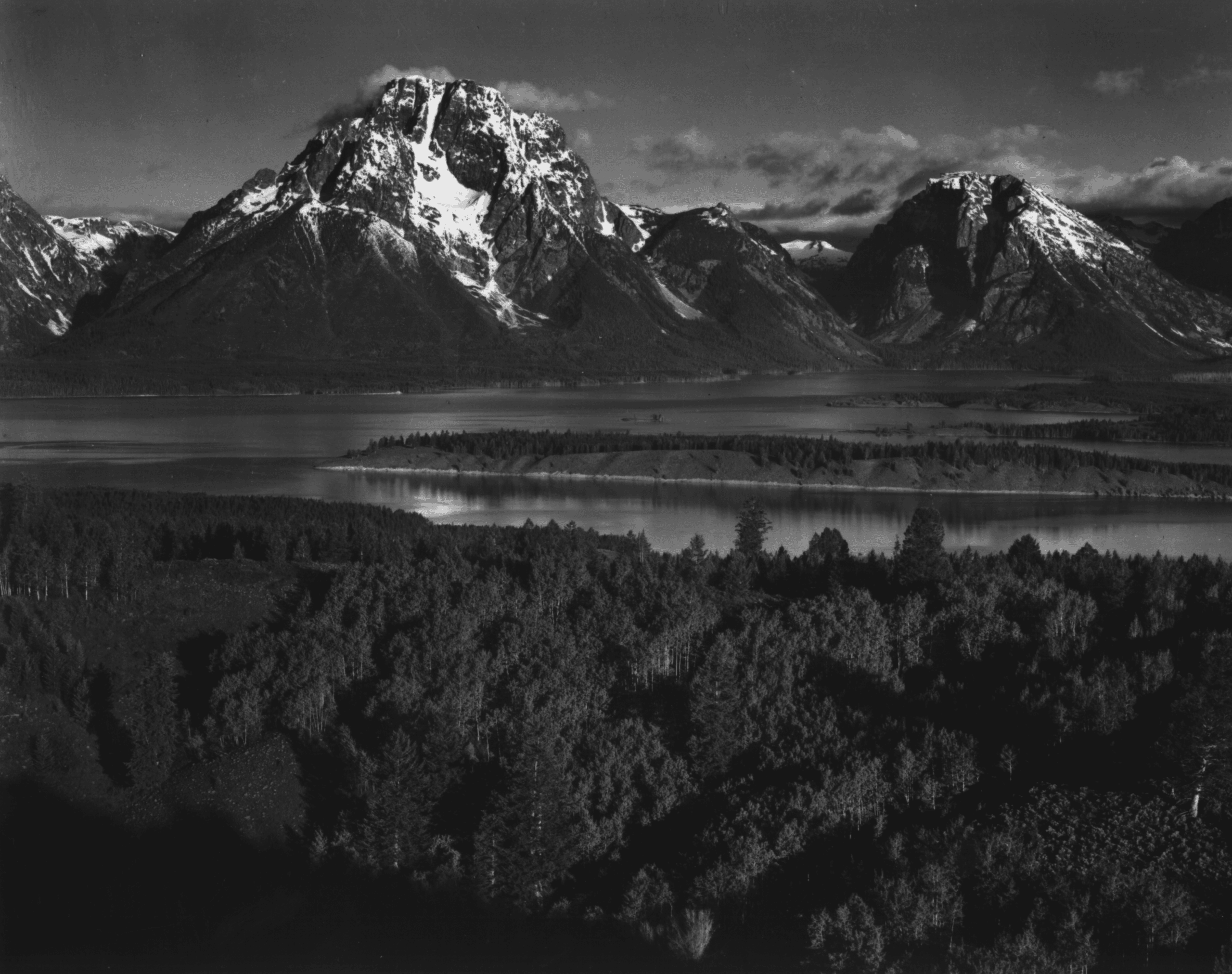
“Ice was all around us. Our first attempt to continue our journey was up through an ice niche, but we discovered that there was no place to hold to. We were consequently forced to follow a little gallery 3 ft. wide up to the north side. Here is where the great similarity of the Grand Teton to the Matterhorn comes in. I have climbed both and I know whereof I am speaking.
All of the rock was slippery and we could not go too carefully. When we reached the top we went on another gallery for a distance of nearly 200 ft. to the west : then up to another ice niche in which we were forced to cut five steps. It was 60 ft. high and led on to a ridge. We made it at 4 o’clock exactly. “
The expedition had been climbing for an incredible eleven hours.
The Spalding Expedition was part of the Rocky Mountain Club which was the first documented ascent of the Grand Teton.
Spalding, Petersen, and Shive returned to the summit to build a cairn and leave their names chiseled in the summit boulder.

Top 10 Grand Teton National Park Facts
6. Chester Arthur Was The First President To Visit The Grand Tetons
One of the more intriguing Grand Teton National Park Facts is that, when it comes to presidents, Grand Teton has been one of the most visited national parks.
The first president to visit did so long before it actually became a national park. America’s 21st President, Chester Alan Arthur, traversed the region in 1883 when it was a wilderness without roads.

President Arthur did not go by himself however.
The Presidential Party included Secretary of War Robert T. Lincoln who was the son of America’s 16th President, Philip H. Sheridan who was Lieutenant General of the Army and had previously been a victorious Civil War general.
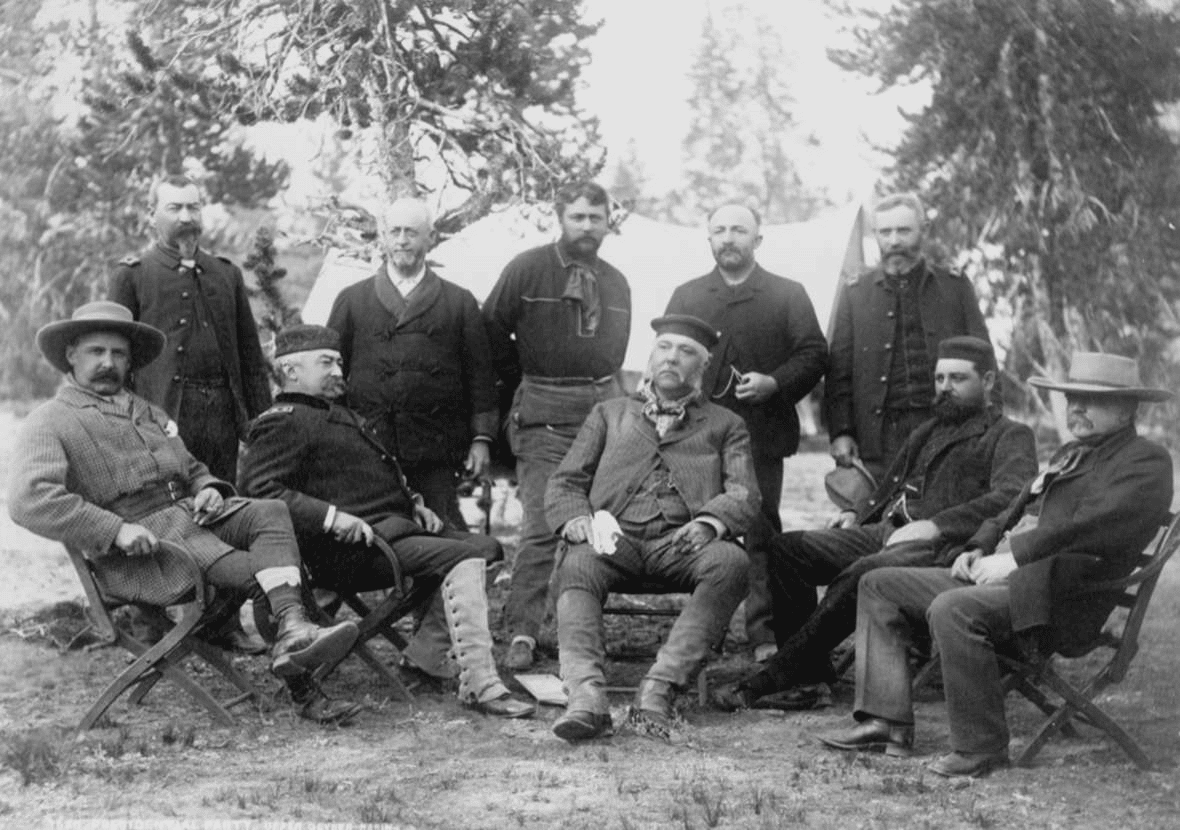
Other Presidents Who Visited Grand Teton
Among the more recent presidents to visit Grand Teton National Park were Richard Nixon, Jimmy Carter and Bill Clinton.
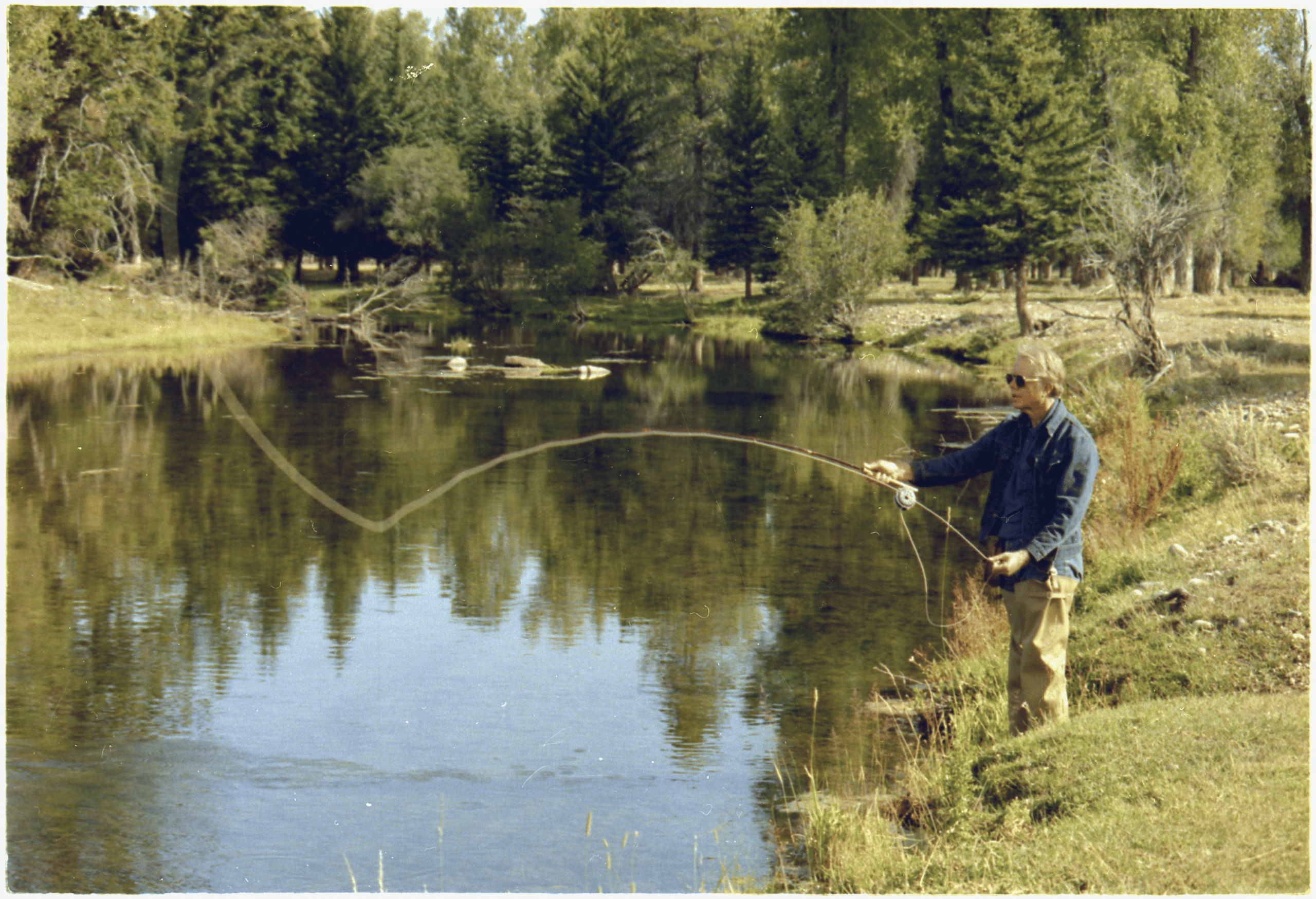
The President Who Visited The Most National Parks
Now have you ever asked yourself: which President of the United States visited the most national parks? Believe it or not, it’s Barack Obama.
As President, Obama visited 30 national parks, lending the spotlight of his office to a National Parks Service campaign to encourage Americans to “Find Your Park.”
Since 2009, the president’s park visits include some of America’s best-known and most-visited natural wonders: Yellowstone, the Grand Canyon and the Everglades.
Others are among the 23 national monuments he dedicated during his presidency, like the Cesar Chavez National Monument in California and the Pullman National Monument in Chicago.
And, of course, let’s not forget the White House which is, believe it or not, a national park site.
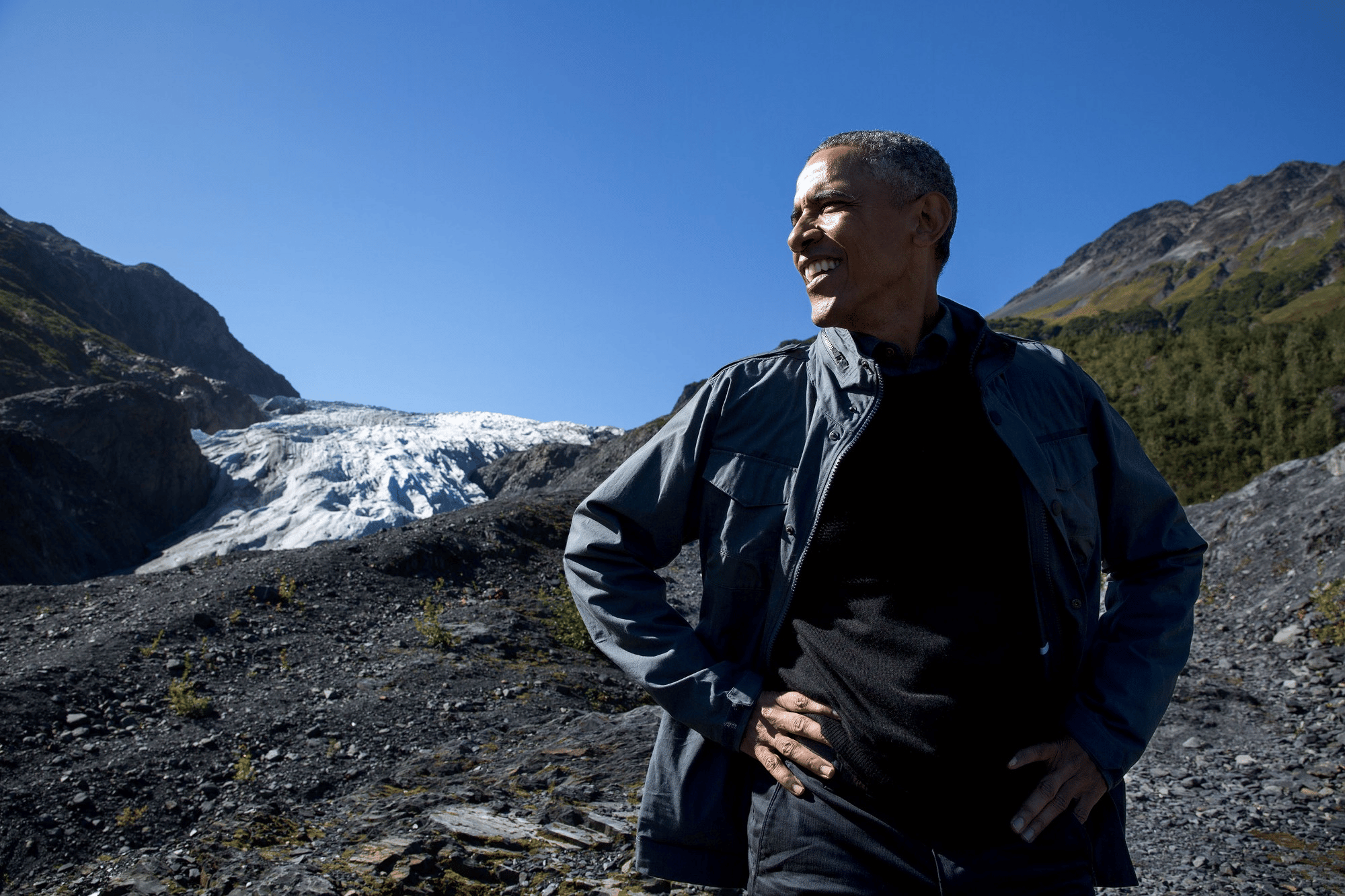
CHECK OUT: 10 FASCINATING Facts About Cuyahoga Valley National Park
7. Grand Teton National Park’s Creation Was Due, In Part, To The Efforts Of A Wealthy Philanthropist
Just when you thought we couldn’t come up with any more unbelievable Grand Teton National Park Facts we’ve come up with another one.
In the 1920s, John D. Rockefeller Jr. — son of the Standard Oil founder, John D. Rockefeller, ardent conservationist and one of America’s richest men — agreed to surreptitiously acquire thousands of acres of breathtaking scenery around Jackson Hole, Wyoming, and then donate this land to the federal government for a national park.
At the behest of Horace Albright, the second director of the National Park Service, Rockefeller formed a company called the Snake River Land Co. to buy up property around the Snake River.
Rockefeller knew that if word got out that he was interested in acquiring land there, the price would skyrocket.

In 1949, John D. Rockefeller, Jr. donated the land he purchased to the government to be included in the national park.
In 1950, Congress combined the original park, the national monument, and the Rockefeller lands to establish present-day Grand Teton National Park.
In 1972, Congress established the John D. Rockefeller, Jr. Memorial Parkway, which connects Yellowstone and Grand Teton, to honor Rockefeller’s philanthropy and commitment to the National Park System.
There’s a wonderful book which depicts the struggle between rugged individualists, cattlemen, Easterners, “New Dealers,” “state’s righters,” state of Wyoming officials, Forest Service personnel, and Park Service leaders all of whom wanted hegemony over Jackson Hole and the Tetons.
It’s called: Crucible for Conservation by Robert W. Righter.
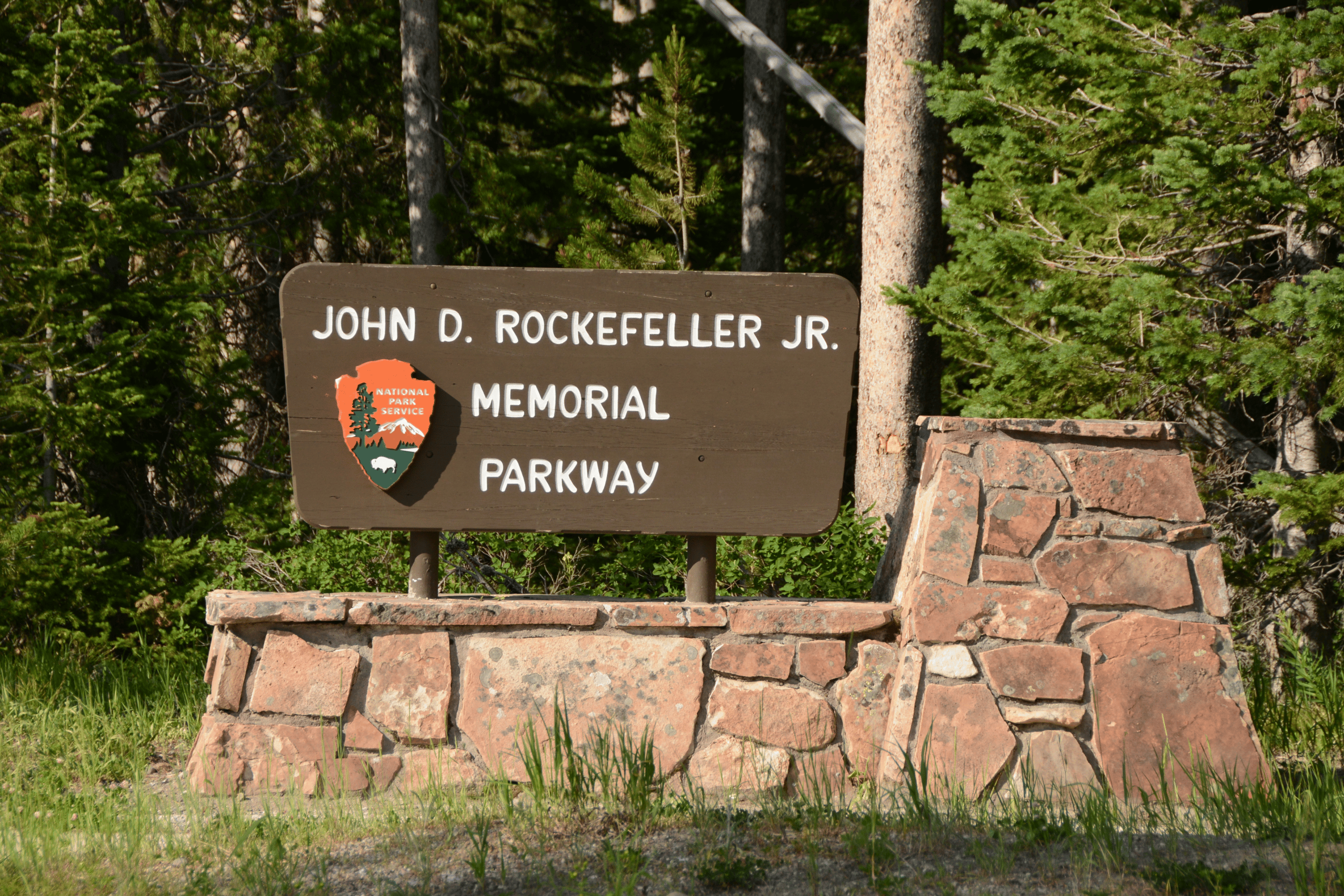
“I believe that every right implies a responsibility, every opportunity an obligation, every possession a duty.”
-john d. rockefeller, jr.
8. Jackson Hole Has Been Featured In Films
Now if you’re a film buff then this next Grand Teton National Park Fact is for you.
Jackson Hole and the Tetons have been the setting for a number of films, including John Wayne’s movie acting debut in The Big Trail in 1930.
Other western film classics include: The Big Sky in 1952, Shane in 1953 and Brokeback Mountain in 2005.
Other memorable films made there have included: Spencer’s Mountain (1963) and Rocky IV (1985).
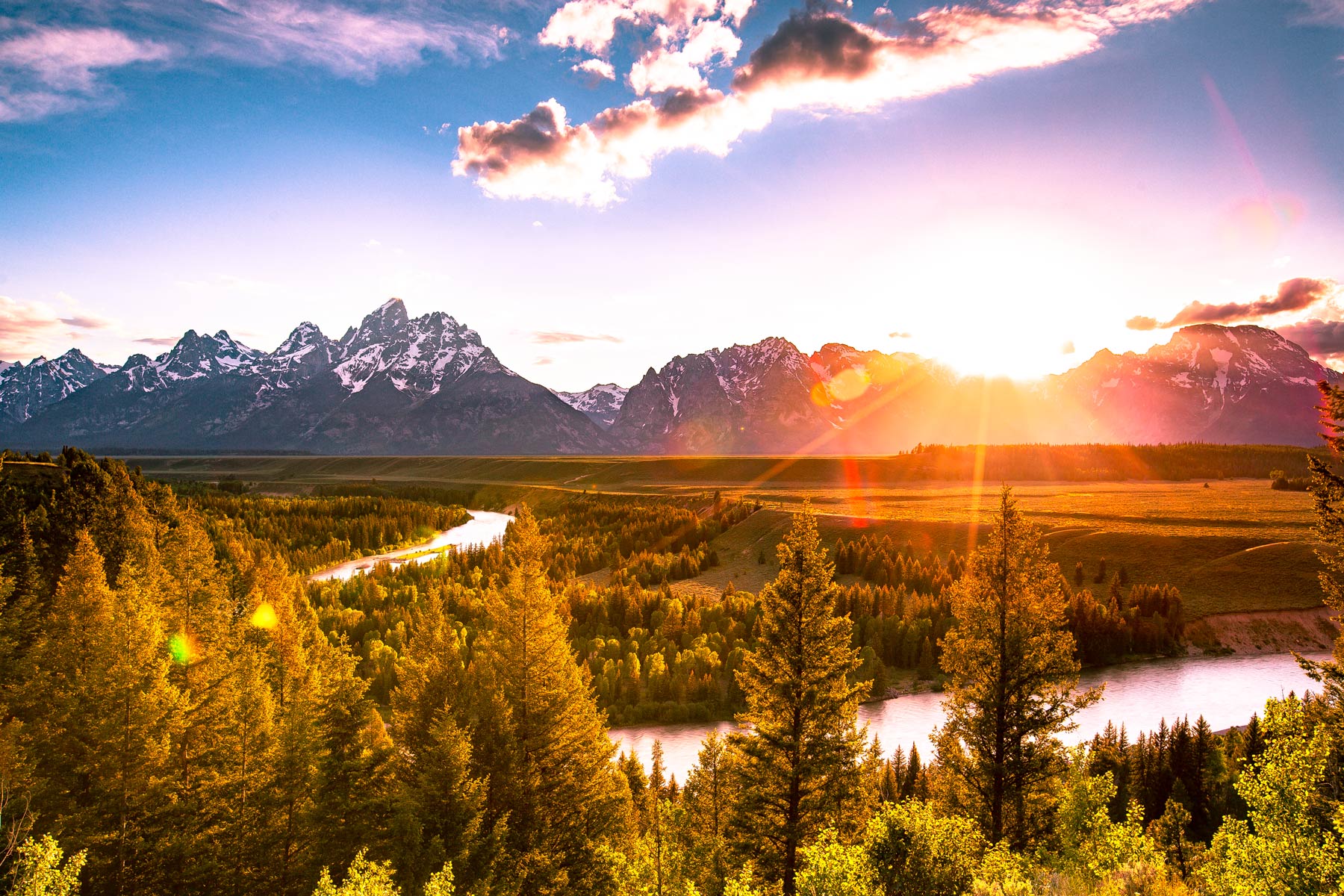
LOOK FAMILIAR? 25+ CLASSIC Movies Filmed In The National Parks
The Waltons
Now if you’re a part of the Boomer Generation then you may remember a wonderful television series entitled, The Waltons.
Spencer’s Mountain, although set in Wyoming rather than the Blue Ridge Mountains of Virginia, is a forerunner of this television series.
I might add that it’s wonderful story which is based on the autobiographical novel Spencer’s Mountain by Earl Hamner Jr.,
In the television series, The Waltons, “Clay Spencer” was changed to “John Walton.” The character who was originally portrayed as Clay Spencer by Henry Fonda was portrayed instead by Ralph Waite when he became John Walton.
Ralph Waite is perhaps better known to a more recent television audience as Jackson Gibbs, the father of Leroy Jethro Gibbs of NCIS.
CHECK OUT: Look Familiar? 10+ CLASSIC Television Shows Filmed In The National Parks
9. Grand Teton National Park Has Its Own Airport
Another of the more interesting of the Grand Teton National Park Facts involves an airport.
The Jackson Hole Airport is the only commercial airport in the United States located entirely inside a National Park.
This airport was established in the 1930s and absorbed into Jackson Hole National Monument and eventually, Grand Teton National Park.
Some national parks are not accessible by car. This one is actually accessible by commercial aircraft. Believe it or not!

10. Grand Teton Features Some Amazing Wildlife Including The Fastest Land Mammal
A visit to Grand Teton National Park will put you face-to-face with some amazing wildlife.
Among the wildlife that you can see at the park are grizzly and black bears, bison, moose, elk and pronghorn.
Did you know that pronghorn, as the fastest land mammal in the western hemisphere, are capable of reaching speeds up to 70 mph? Don’t try to keep up with them because you can’t.

Top 15 Grand Teton National Park Facts
11. The Park Also Features The Smallest Bird Found In North America
Now here’s another one of those intriguing Grand Teton National Park Facts. According to the National Park Service, Grand Teton National Park has many diverse communities that support a variety of birds.
Some of the largest and smallest North American birds inhabit or pass through the park and parkway.
The calliope hummingbird weighs less than a tenth of an ounce. It can be found around blooming scarlet gilia and near willow shrubs in the park.
The calliope hummingbird also happens to be the smallest bird found in North America.
The trumpeter swan, the largest waterfowl in North America, can also be found in the park at Oxbow Bend, Swan Lake and Flat Creek in the National Elk Refuge.
Trumpeter swans are often found in pairs that mate for life.
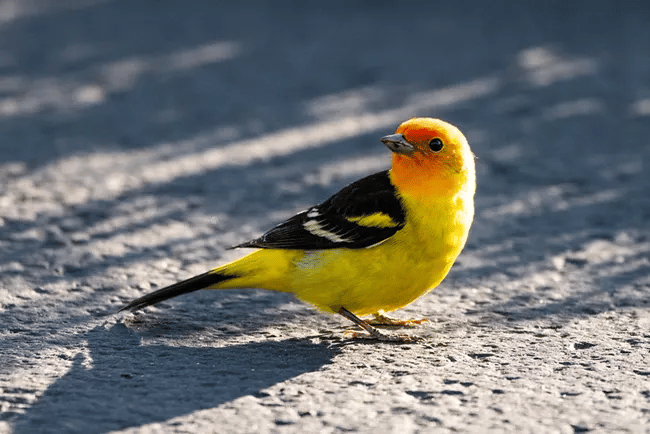
12. The Grand Teton Mountain Range Is The Youngest Range In The Rocky Mountains
If you’re fascinated by geology then you’ll enjoy these next two Grand Teton National Park Facts.
The Grand Teton mountain range is considered to be one of the youngest ranges of the Rocky Mountains, and among the youngest mountains in the world.
The National Park Service states that the range formed roughly 775 million years ago through a series of vertical, east-west trending cracks. These cracks were formed when the region stretched north to south, cracking the deeply buried gneiss and granite.
Basaltic magma then squirted into these cracks and cooled to form dikes of an igneous rock called diabase.
One of these dikes that slices through the face of Mount Moran is 150 feet wide, which is large enough to fill Jenny Lake three times over.
Black diabase dikes are also visible on the east face of the Middle Teton and the southeast flank of the Grand Teton, which can be seen from the Teton Park Road.
These features make the Grand Teton range an interesting study for conservationists and scientists alike.

13. A 2.7 Billion-Year Old Metamorphic Rock Called Gneiss Makes Up Much Of The Teton Range
The oldest Precambrian rocks in the Teton Range are layered gneisses and schists exposed over wide areas in the northern and southern parts of the range and as scattered isolated masses in the younger granite that forms the high peaks in the central parts.
The layered gneisses may be seen easily along the trails in the lower parts of Indian Paintbrush and Death Canyons, and near Static Peak.
As a matter of fact, the park features some of the oldest rocks found on the planet.
It’s amazing to consider the fact that the visitor who looks at the high, rugged peaks of the Teton Range is actually seeing rocks that record about seven-eighths of all geologic time.
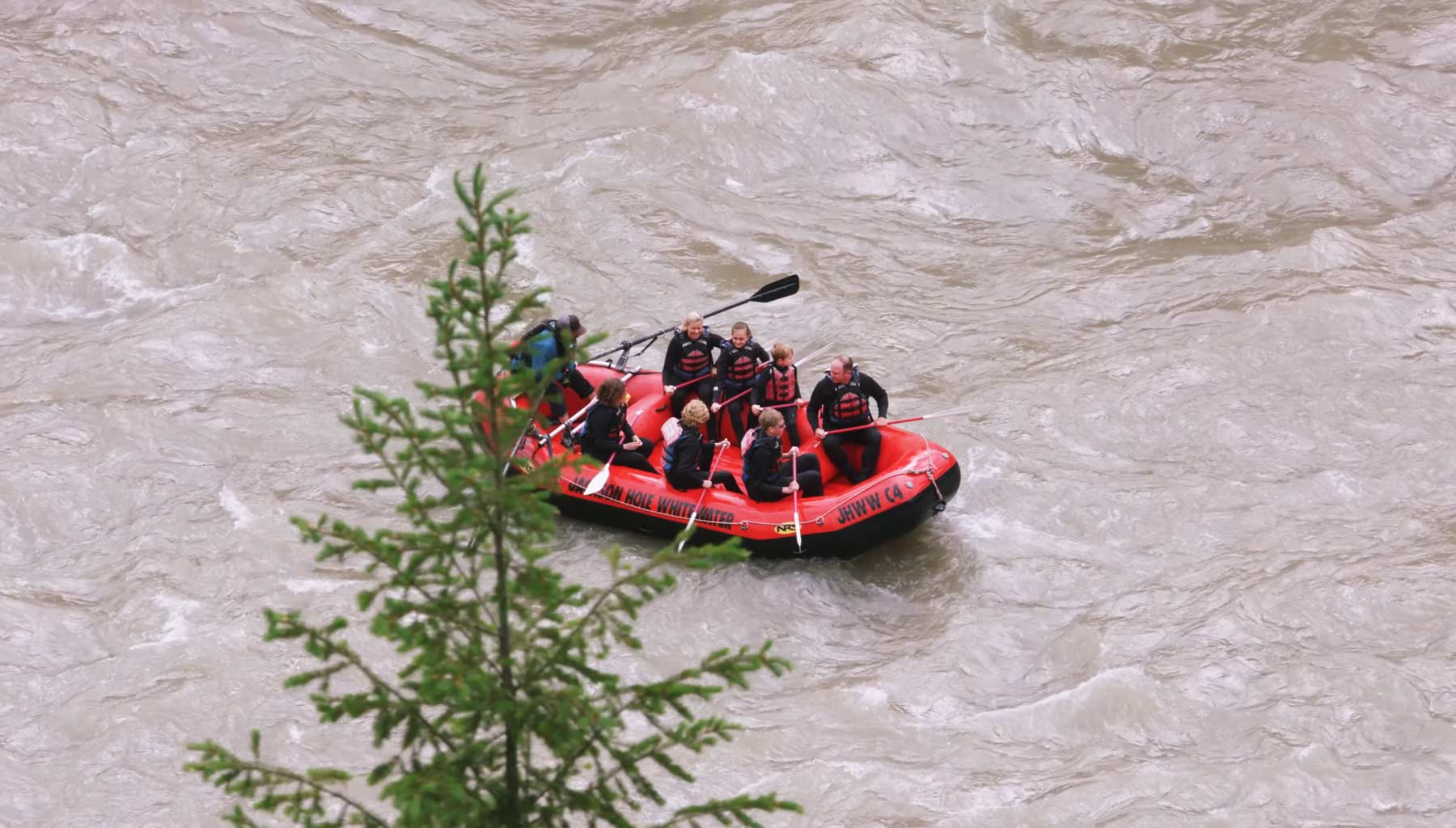
Basement Rocks
Precambrian rocks are some of the oldest rocks on Earth, dating back to a time period known as the Precambrian Era, which lasted from about 4.6 billion to 541 million years ago.
These rocks are commonly referred to as “basement rocks” by geologists because they form the foundation of the continent.
These rocks contain valuable information about the origin and history of the continent and the planet as a whole. However, deciphering this information is a challenging task for geologists as the rocks are incredibly old and have been subjected to millions of years of weathering, erosion, and tectonic activity.
The information contained in these rocks is also often incomplete, making it difficult to piece together a complete picture of the events that occurred during the Precambrian Era.
It is often compared to trying to read the history of an ancient and long-forgotten civilization from scattered pages of a torn manuscript written in a language that is only partially understood.
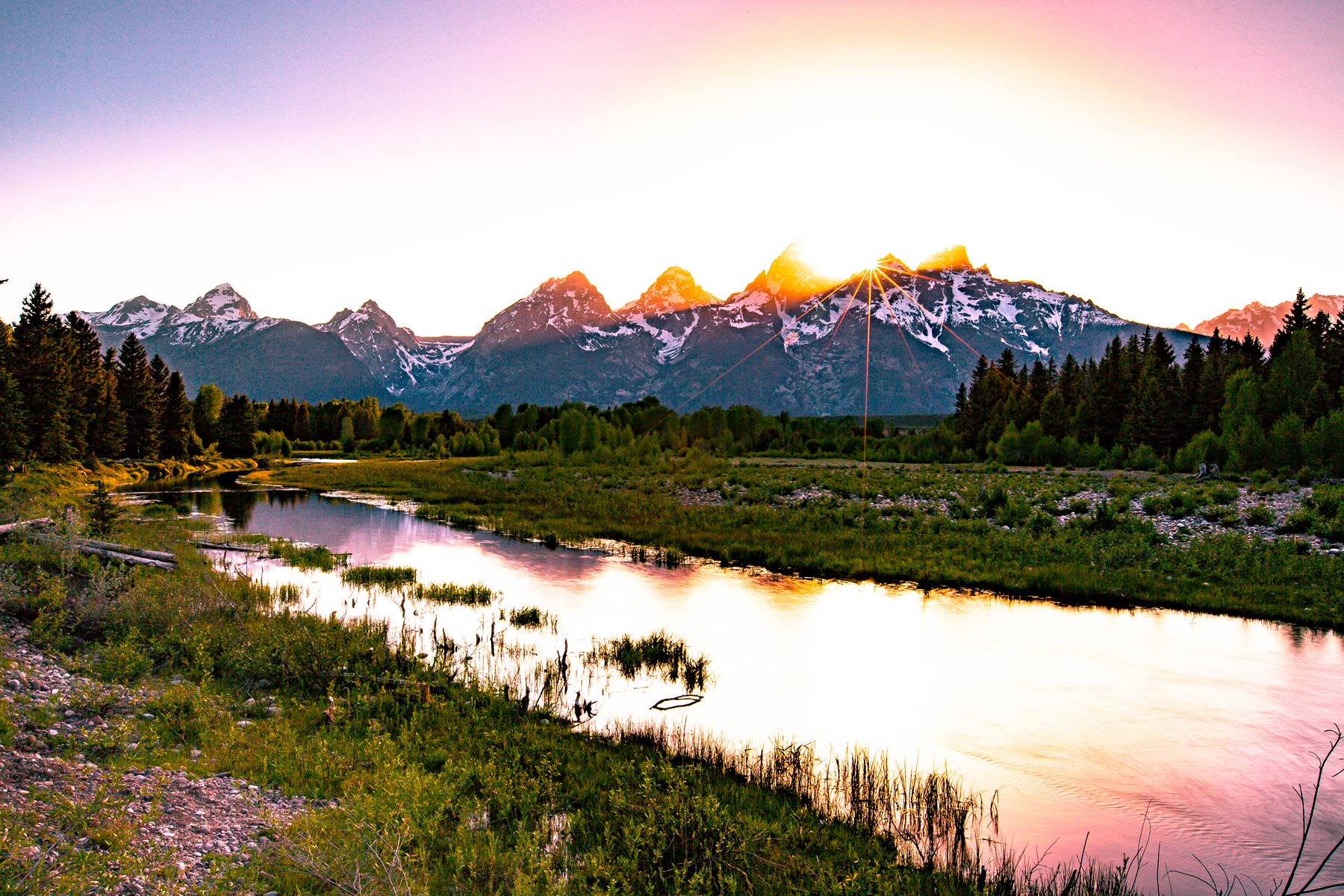
14. Grand Teton Participates In An Elk Reduction Program
One of the more unusual Grand Teton National Park Facts involves elk.
Elk are managed as a part of the Jackson elk herd, the largest elk herd in North America.
In 1950, when Congress expanded the boundaries of Grand Teton National Park, they included a provision to manage the elk population through an annual elk reduction program.
The Wyoming Game & Fish Department has set a target objective of 11,000 elk for the Jackson herd that includes the park herd segment.
Now if you want to participate in this program then you must have a park permit and a valid Wyoming elk hunting license to harvest elk during the elk reduction program.
Participants interested in the program should contact Wyoming Game & Fish Department.
When needed, the elk reduction program occurs in the park from early-November through early December. The dates vary slightly from year to year and from area to area.
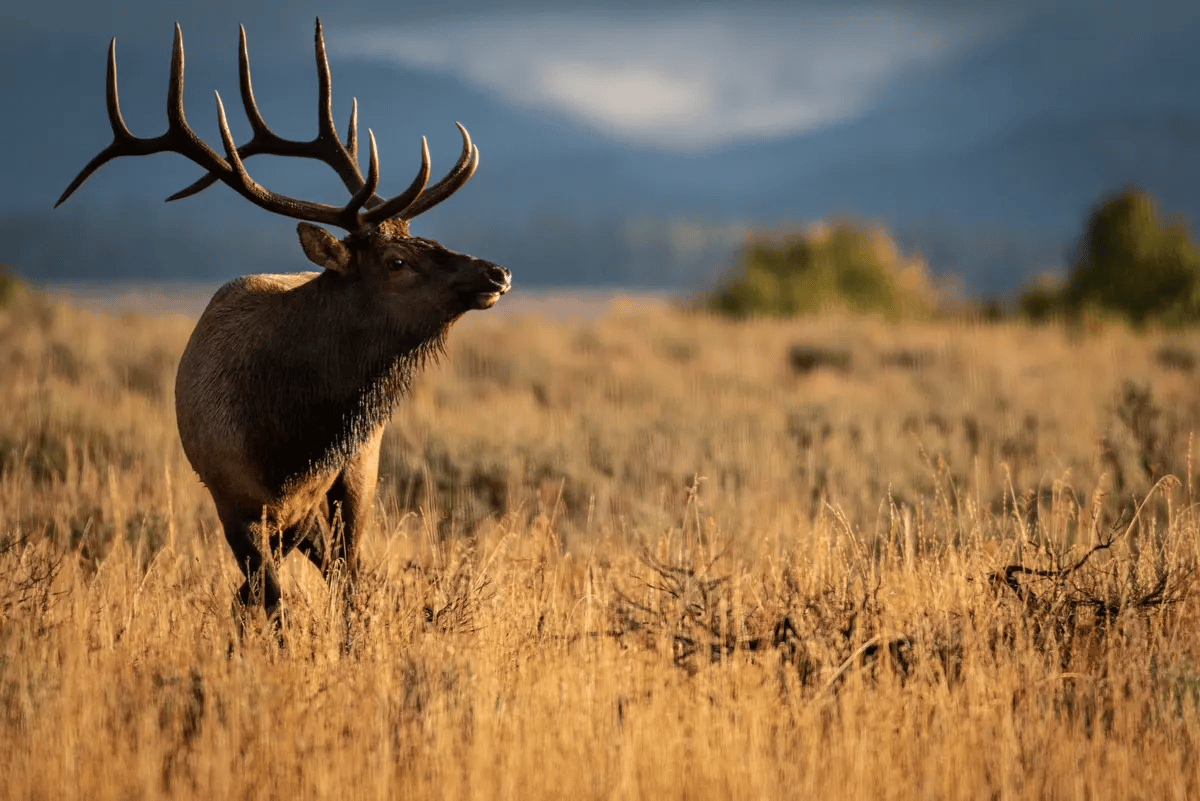
15. Grand Teton Was A Family Affair
I’ve saved my favorite Grand Teton National Park Fact for last. Grand Teton is a family affair!
Now what, exactly, do I mean by a “family affair?” In recent years, the park has seen a massive influx in folks (like the Pattiz Family) who want to get a glimpse of this breathtaking destination.
Who can blame us! In 2016, all four of us managed to make the trek. It’s one amazing trip that I’ll never forget.
And, together we produced a film for More Than Just Parks.
As a matter of fact, it’s the only time that four Pattizes let their powers combine to make a breathtaking short film about one of America’s most magnificent national parks.
So Grand Teton National Park truly was a family affair!

Check Out Our Grand Teton Film
More Than Just Parks is the ONLY place you can go to find expert guides, beautiful photos, helpful tips, breathtaking films and so much more.
To make this film happen we spent nearly a month in Grand Teton National Park during June & July. Of all the films we’ve shot this one features the most wildlife.
We captured bison, elk, moose, bears, foxes, beavers and much more.
And, we had a great time doing it!
Why Trust Us About Grand Teton National Park?
We’re Jim Pattiz and Will Pattiz, collectively known as the Pattiz Brothers (and sometimes the Parks Brothers) and we absolutely LOVE the national parks.
You should probably know that we don’t just make this stuff up out of thin air. We’ve spent our entire adult lives exploring and filming America’s national parks and public lands.
We’ve worked with the National Park Service, the Department of Interior, USDA, and the U.S. Forest Service for years creating films on important places and issues. Our work has been featured in leading publications all over the world and even some people outside of our immediate family call us experts on the national parks.

Meet The Parks Brothers
Map Of Grand Teton National Park
List Of Grand Teton National Park Facts
- The Grand Tetons Were Created By A Seismic Disaster
- The Earliest Peoples Suddenly Vanished Leaving No Trace Of Their Presence
- French-Canadian Trappers Named The Tetons
- The First American To Pass Through The Region Has A Stone Named After Him
- The Spalding Party Ascended The Tetons In 1898
- Chester Arthur Was The First President To Visit The Grand Tetons
- Grand Teton National Park’s Creation Was Due, In Part, To The Efforts Of A Wealthy Philanthropist
- Jackson Hole Has Been Featured In Films
- Grand Teton National Park Has Its Own Airport
- Grand Teton Features Some Amazing Wildlife Including The Fastest Land Mammal
- The Park Also Features The Smallest Bird Found In North America
- The Grand Teton Mountain Range Is The Youngest Range In The Rocky Mountains
- A 2.7 Billion-Year Old Metamorphic Rock Called Gneiss Makes Up Much Of The Teton Range
- Grand Teton Participates In An Elk Reduction Program
- Grand Teton Was A Family Affair
We Hope You’ll Follow Our Journey

Our goal here at More Than Just Parks is to share the beauty of America’s national parks and public lands through stunning short films in an effort to get Americans and the world to see the true value in land conservation.
We hope you’ll follow our journey through the parks and help us to keep them the incredible places that they are. If you’re interested in joining the adventure then please sign up below!
Related Links
Best Things to Do Glacier NP: 15 Epic Things to Do at Glacier National Park
Glacier National Park Itinerary: Ultimate 3 Day Glacier National Park Itinerary
Glacier National Park Hikes: 15 Best Hikes in Glacier National Park
Montana National Parks: 10 Amazing Montana National Parks to Visit
Grand Teton Hikes: 18 EPIC Grand Teton National Park Hikes (Photos + Guide)
Grand Teton Guide: Grand Teton National Park Ultimate Guide
Things to Do Grand Teton: 17 EPIC Things to Do Grand Teton National Park
Grand Teton Maps: The Best Maps for Grand Teton National Park
Things to Do Yellowstone: 15 BEST Things to Do Yellowstone National Park
Yellowstone Facts: 10 AMAZING Yellowstone National Park Facts
Best Airports Near Yellowstone: The BEST Airports Near Yellowstone National Park
The Wyoming National Parks: 10 EPIC Wyoming National Parks: The Complete Guide (+ Photos)
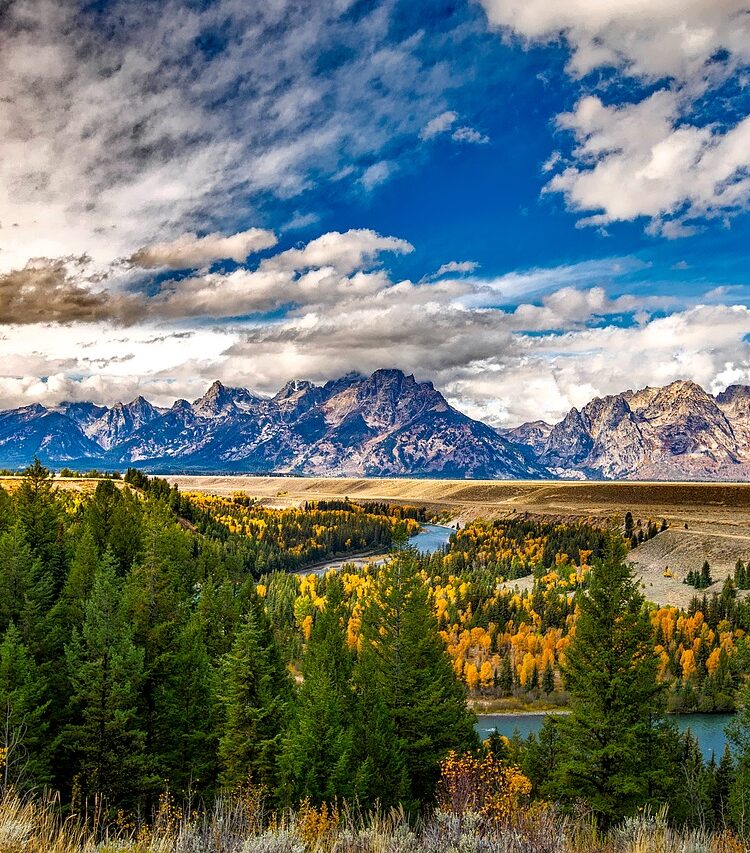
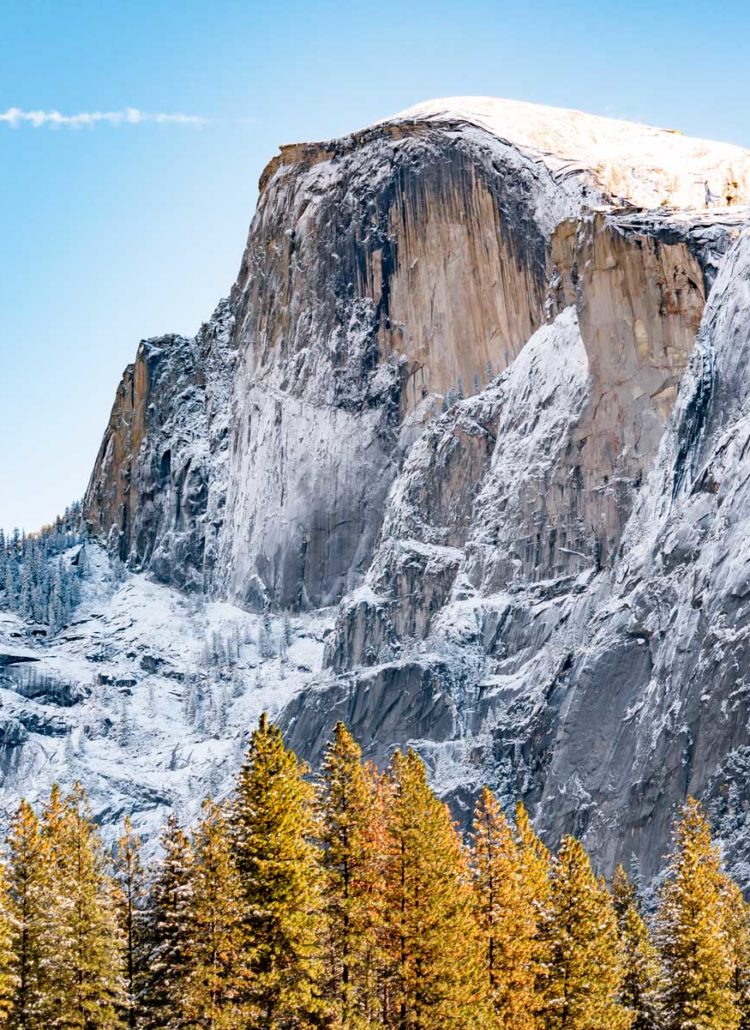



Leave a Reply